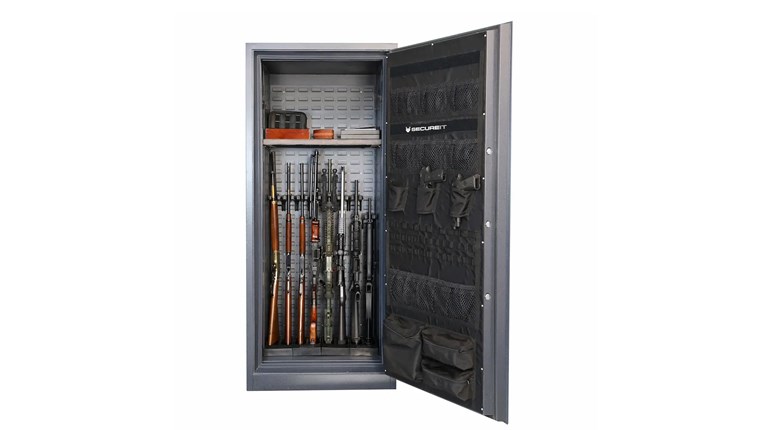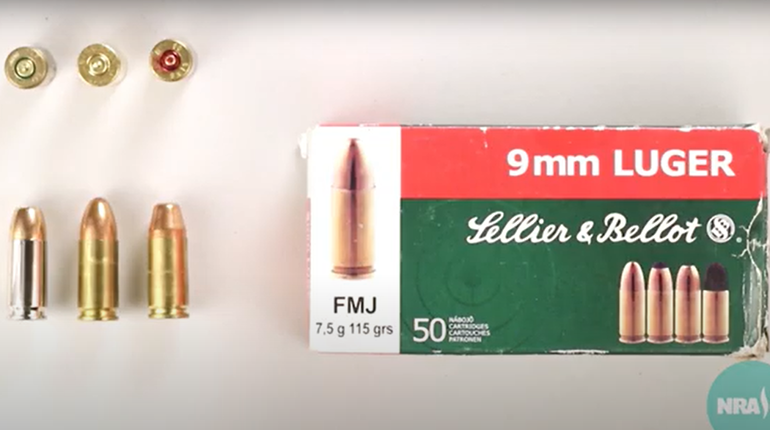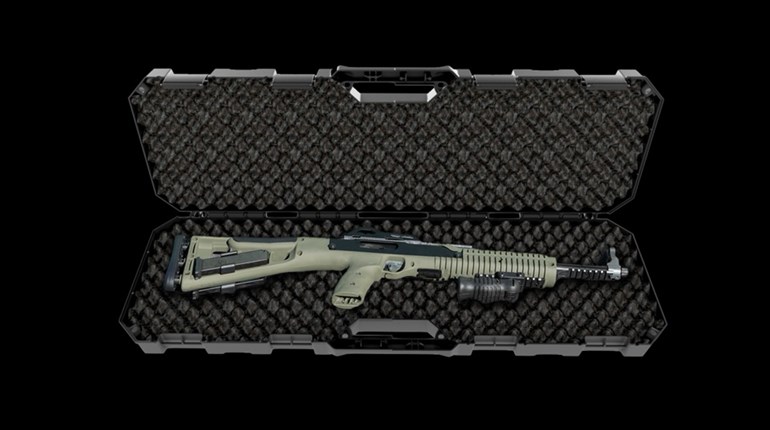
For as far back as I can remember, my father always stored a shotgun in the hall closet. It was on the top shelf, away from us kids, nestled atop a bunch of winter scarves. The hall closet was located right next to my parents’ bedroom, so if he needed to get to that shotgun quickly, he could do it. I don’t recall the gauge, but I do remember it was a pump-action shotgun that he nicknamed “The Attitude Adjuster.”
We were fortunate that we lived in a safe neighborhood, so he never had to adjust any attitudes. (Oh, and funny thing, while he only used that shotgun to go pheasant hunting in the fall, he would take it out and clean it all year long at the kitchen table whenever one of his daughters had a date. Thanks, Dad!)
“In this unprecedented time when school-age children are spending more time at home than ever before, safely handling and securely storing firearms when not in use are the best ways to help prevent accidents, thefts and misuse,” says Joe Bartozzi, President & CEO of the National Shooting Sports Foundation (NSSF). “Project ChildSafe’s gun safety resources can help owners determine the best secure storage device for their lifestyle.” Project ChildSafe is a program of the NSSF to promote firearm safety and education. For more information, go to: https://projectchildsafe.org/
Follow these five top tips to find out the best ways to store your firearms at home to keep your family safe.
1. Be proactive. Your guns are your responsibility. You are responsible for making sure your firearms are not accessible to anyone but yourself and other authorized personnel, especially curious children! With the exception of a concealed or openly carried firearm in a secure holster, you should always unload firearms when they are not in use. Depending upon your individual situation, you might consider storing the ammo in a separate location.
2. Think like a kid. When we were little, my Dad stored most of his firearms in locked cabinets down in the basement. The key to those cabinets was placed on top of the cabinet, way out of our reach. And as I mentioned earlier, the “Attitude Adjuster” shotgun was stored on the top shelf of a closet. Notice a pattern here? If you have small children, store your firearms in locations inaccessible to them. But remember your own childhood and how resourceful kids can be! Make sure they cannot use a chair, step ladder, etc. to access the firearms. Most importantly, be sure to tell them that their friends are forbidden from looking for firearms in your house.
3. Explore your options. Trigger locks are a simple and affordable option for preventing a gun from being loaded or fired by an unauthorized user. A trigger shoe clamps down around the trigger to prevent the trigger from being squeezed. Most new guns purchased today come with a trigger lock right in the box.
Cable locks block the action of the firearm, preventing the action of rifles and shotguns from being closed. When used with a pistol, a cable lock prevents the magazine from being loaded into the grip.
Gun cases come in a wide variety of shapes, sizes and price ranges. Most soft and hard cases can be locked with a padlock through the zipper pull or carry handle. Note: While a locked gun case should keep little hands off the gun, they are my least favorite in terms of security because someone can break in to your house/car, and steal both the gun and the case in a minute.
Strong boxes and security cases are available at most sporting goods stores and big-box home goods stores. Their prices range depending on how techy you prefer their locking mechanism to be (some have a fingerprint reader). These units are my favorite for my pistols, because they are inexpensive and give me quick access to my firearms in a defensive situation.
Locking gun cabinets are the next level up when it comes to safely storing guns, especially if they are made of thick, heavy-duty steel. They come in a variety of sizes, and are not too heavy, making them versatile to carry up or down steps (with the help of a friend). You can pop one in your bedroom (for every day security), and bring a second one in the basement (for your hunting rifles/shotguns). Just keep in mind that if you and a buddy can carry them in, a burglar and his buddy can carry them out, so be sure to attach the cabinet to a wall or the floor.
Gun safes are the most secure gun storage option. Even the least expensive safe is superior to any other storage option in preventing unauthorized access to firearms. The weight of the safe, the heavy-gauge steel of the outer box, the complex locking mechanism and the option to bolt the safe directly to a concrete slab, all combine to frustrate would-be burglars.
4. Put on your teacher’s cap. When they are old enough, make sure your children are aware and understand the safety guidelines concerning firearms. Most children are at this point when they demonstrate good behavior, reasoning and self-control when you show them your guns, or other dangerous items, such as knives. I was about 10 years old when my Dad let me shoot his .22 Hi-Standard revolver for my birthday in January. Later that year he showed me how to shoot a bolt-action .22 rifle at a target stapled to a tree—and I’ve never looked back!
Drill in to them the following basic safety tips, and ask your children to repeat them back to you, word for word. Repeat as often as necessary:
- Always keep the muzzle of a gun pointed in a safe direction.
- Always keep your finger off the trigger until you are ready to shoot
- Always keep the gun unloaded until ready to fire
5. Teach them what to do if they do find a gun. Teach your children NRA's Eddie Eagle Gun Safe mantra, which is, "If you see a gun, STOP! DON'T TOUCH! LEAVE THE AREA! TELL AN ADULT." For more information, go to: https://eddieeagle.nra.org/.







































